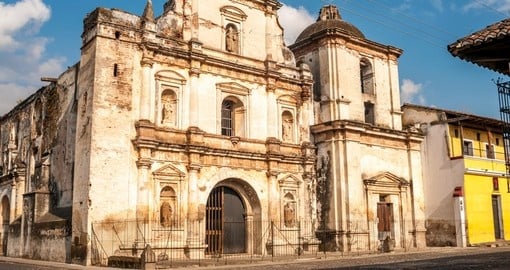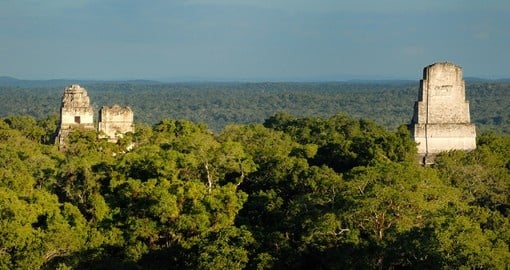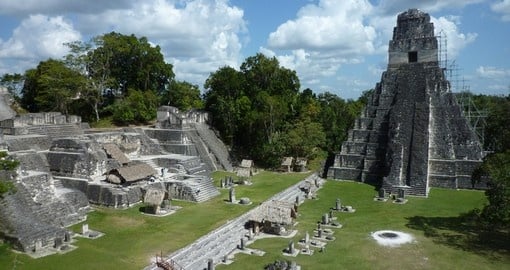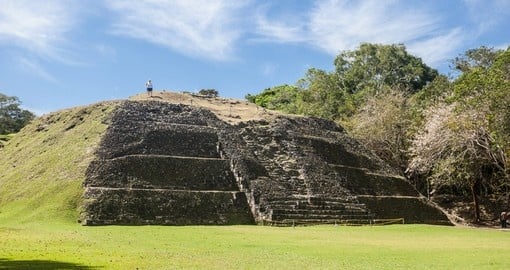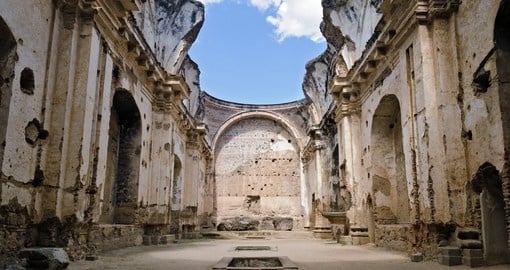Guatemala History
While it is believed that human habitation in Guatemala dates back to as early as 12,000 BC, the civilization flourished during the Classic Period (250-900 AD). It was during this time that the Mayan civilization developed from Copán in modern Honduras, through Guatemala and Belize to Mexico’s Yucatán Peninsula. In Guatemala, Tikal became a large urban centre and grew into one of the most powerful kingdoms of the ancient Maya. Unfortunately, late in the 8th century, trade began to shrink while conflict emerged and by the 10th century, many cities like Tikal became minor towns. As a result, many other ethnic groups started to arrive in the area.
The Spanish ventured to Guatemala beginning in 1519, however, it was the arrival of Pedro de Alvarado in 1524 that had the biggest impact on the country. While initially able to secure an ally in the local Kaqchiquels people, the relationship eventually grew complicated and Alvarado turned on his allies. He travelled through the country murdering much of the population, and bringing the entire region under Spanish control. Early in the 19th century, pressure on the Spanish empire forced it to grant independence to its new world colonies. Upon Mexico’s independence, they annexed Guatemala in 1822, however, this was short-lived and Guatemala was independent again by 1823. Guatemala entered into the United Provinces of Central America with El Salvador, Nicaragua, Honduras and Costa Rica, but this union only lasted until 1840. The local populations were no longer protected by Spanish laws and were often forced to give up their lands, falling further into debt to their colonist landlords. This way of life continued with the expansion of the coffee industry in the country which was run by small, elite families.
Guatemalan rule fell into the hands of a series of dictators until the 1945 elections brought in Juan José Arévalo. He ruled for six years and initiated many social reforms including a department to look after indigenous affairs and more liberal labour laws. Arévalo was succeeded by Colonel Arbenz Guzman who attempted to establish land reforms in the 1950s. Unfortunately, he was overthrown by a US-backed invasion led by his military opponents. Military governments succeeded Guzman and the country fell into a civil war fought between the right-wing military government and left-wing guerilla movements.
In 1982, Efraín Ríos Montt, a former general and army chief of staff staged a coup d’etat to become president. He oversaw a vicious attack against the insurgent campaigns, and although he was deposed in 1983, it did not stop the violence that had taken over the country. The United States cut off military assistance but the terror continued into the 1990s. In December 1996, Peace Accords were established examining the human rights violations that had occurred in the military. It is estimated that during the thirty-six-year civil war, some 200,000 Guatemalans had been killed while a million were made homeless. This number does not reflect those of the population who disappeared.
In 1999, an extensive UN-sponsored investigation came to a close. Their findings were that the military was responsible for 90% of the deaths during the civil war. US president Bill Clinton offered an apology on behalf of past American governments for their complacency, as well as their assistance during the conflict. In May 2013, Efraín Ríos Montt was found guilty of genocide and crimes against humanity and was sentenced to eighty years in prison.
Since the peace accords, the Guatemalan economy has strengthened and the country has witnessed successive democratic elections. Today, Guatemala has emerged as a popular tourist destination that celebrates its rich Mayan heritage. A friendly population and indigenous charm await those who venture to this incredible country.
Guatemala Travel Information
At Goway we believe that a well-informed traveller is a safer traveller. With this in mind, we have compiled an easy-to-navigate travel information section dedicated to Guatemala.
Learn about the history and culture of Guatemala, the must-try food and drink, and what to pack in your suitcase. Read about Guatemala's nature and wildlife, weather and geography, along with 'Country Quickfacts' compiled by our travel experts. Our globetrotting tips, as well as our visa and health information, will help ensure you're properly prepared for a safe and enjoyable trip. The only way you could possibly learn more is by embarking on your journey and discovering Guatemala for yourself. Start exploring… book one of our Guatemala tours today!
Extend Your Trip
After your Guatemala Tour, why not consider another of Goway's Latin America tours. These include a large selection of other exciting countries in Central and South America. We offer Chile vacation packages and Easter Island tours, Ecuador vacation packages which include Galapagos cruises, Peru vacation packages which include Machu Picchu tours and Brazil tours including Iguassu Falls tours among many others.
Book your Guatemala tour with Goway!
 LATIN AMERICA by Goway is an exclusive division that specializes in planning and organizing Guatemala tours and experiences. Choose from one of our independent stopover modules and more, We want to be your first choice when next you go globetrotting to Guatemala.
LATIN AMERICA by Goway is an exclusive division that specializes in planning and organizing Guatemala tours and experiences. Choose from one of our independent stopover modules and more, We want to be your first choice when next you go globetrotting to Guatemala.
Get a Trip Quote Order a Brochure






